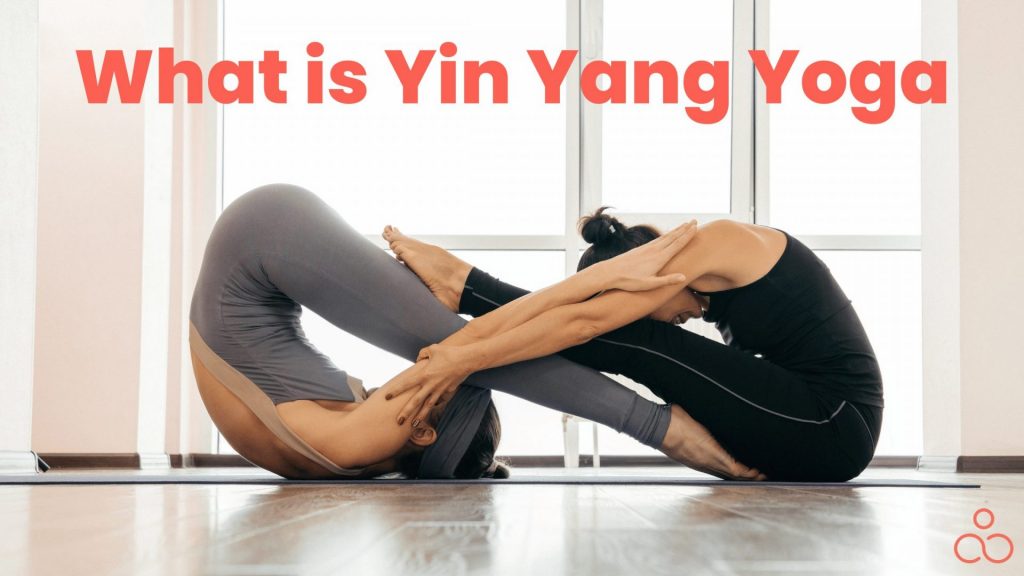Yin Yang Yoga has become a popular exercise many people are trying. But what is Yin Yang Yoga, and how does it impact our body, mind, and spirit?
The Yin and Yang concepts are still evident in contemporary life. For instance, light from the sun reaches the earth, yet darkness also exists. Although they seem similar, a lot goes into Yin and Yang Yoga.
This article will explore each aspect in depth and provide you with all the necessary knowledge about what is Yang & Yin Yoga & what makes them different. We’ll also discuss the many benefits of practicing Yin and Yang Yoga, whether you want to improve your health or simply relax. By understanding its nature and purpose, you can better incorporate it into your daily routine for maximum results.
What is Yin Yang Yoga? What is the importance of the Yin Yang Yoga practice?
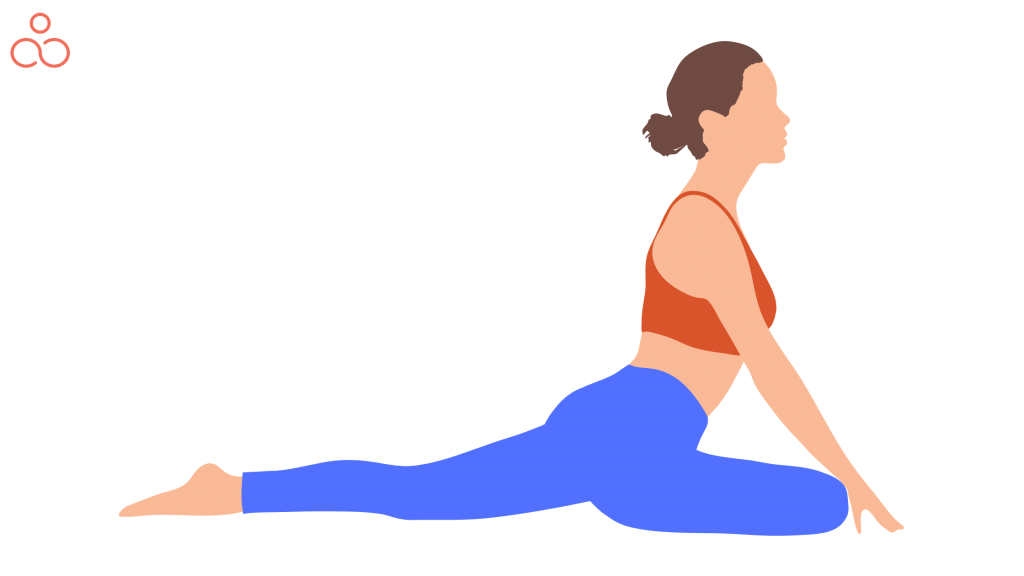
“Yin Yang Yoga” is a practice that blends the two styles of Yoga into one practice — slow-paced Yin Yoga with traditional Yang Yoga (Ashtanga and Hatha). This practice aims to balance the two opposing energies in the body and bring harmony to mind and spirit. This practice is rooted in the ancient Taoist philosophy of Yin and Yang, which is based on two opposing yet complementary forces.
Yin is associated with the feminine, passive, cooling energy, while Yang is associated with the masculine, dynamic, warming energy.
(The sun is seen as ‘Yang’, and the moon is seen as ‘Yin ’)
Yin Yoga targets the connective tissues in the body, holding poses for several minutes at a time to increase flexibility and release tension. Yang Yoga, on the other hand, focuses on building strength, stamina, and agility through more active movements and transitions between poses. Together, they provide a complete, well-rounded practice that benefits both the body and the mind.
The Coexistence of Yin and Yang in Yoga and the Body
Between 1,300 and 200 BC, the concept and philosophy of Yin and Yang were established in ancient China; around the same time, Yoga was first documented in writing about the same period in ancient India. Even though the two concepts had not yet united, they shared certain fundamental principles for achieving balance and harmony in the universe.
The “Vedas scriptures” date back to 1,500 BC, including the earliest writing records on Yoga. The Rig Veda is the name of this work, which first addresses Yoga (as well as the chakras).
Although the precise date when Yoga traveled from India to China is unknown (it is believed that it did so after Buddha left India with the Vedic teachings somewhat around 500 BC), it is evident that the fundamental ideas of “Yin and Yang” and those of Yoga were bound to collide.
Paulie Zink, a martial arts champion, is credited with pioneering “Yin-Yang Yoga” in the 1970s by combining Taoist and traditional Hatha Yoga practices. This combination found a balance between faster-paced “traditional Yoga” or “Yang Yoga” and “Yin Yoga” or slower-paced Taoist Yoga.
The essence of Zink’s Yin-Yang Yoga is that you must switch between straining yourself and being still to achieve balance throughout your Yoga practice.
Although many Yin Yoga poses closely resemble the asanas of conventional or “Yang” Yoga, they have different names to alert those familiar with traditional Yoga not to perform them similarly. In general, the poses of Yin Yoga are performed with little muscular exertion.
For example:
- In the Seal pose, in which a practitioner lies face down and raises the trunk, the upward movement is gradual and entirely supported by the arms, while the legs are relaxed.
- Whereas in Bhujangasana (Cobra Pose), the practitioner actively curves the spine upward in an arc using arms and lower back muscles and firmly reaches back with the legs. Because Yin Yoga does not make practitioners hot, the room temperature is slightly higher than usual.
Principles of Yin & Yang Yoga
Yin and Yang
The Taoist notions of Yin and Yang—opposite and complementary natural forces—form the foundation of Yin Yoga. This Yoga practice is designed to target the connective tissues, such as the bones, ligaments, and joints of the body, to increase circulation in the joints and improve flexibility.
According to Traditional Chinese Medicine, certain meridians, or subtle channels, are stimulated by specific postures in Yin Yoga, comparable to the Nadi channels in Hatha Yoga.
Yang Yoga’s qualities can be reflected in the Yoga practice when we embody ‘sthira‘, a word from the Yoga Sutra of Patanjali that describes steadiness. And Yin qualities can be reflected in the Yoga practice when we represent ‘sukha‘, a word from the Yoga Sutra of Patanjali that describes ease.
According to Paulie Zink, Yin Yoga has an ultimate purpose: to “open the heart and invoke the primal self”, in keeping with its Taoist roots. According to Sarah Powers, developing inner calm and a heightened awareness of the body and mind are two main goals of Yin practice. Through this practice, practitioners can learn to be more mindful of their bodies and breath, allowing them to move into postures with greater ease and comfort.
What is Yin Yang Yoga practice? Why should you keep practicing Yin-Yang Yoga?
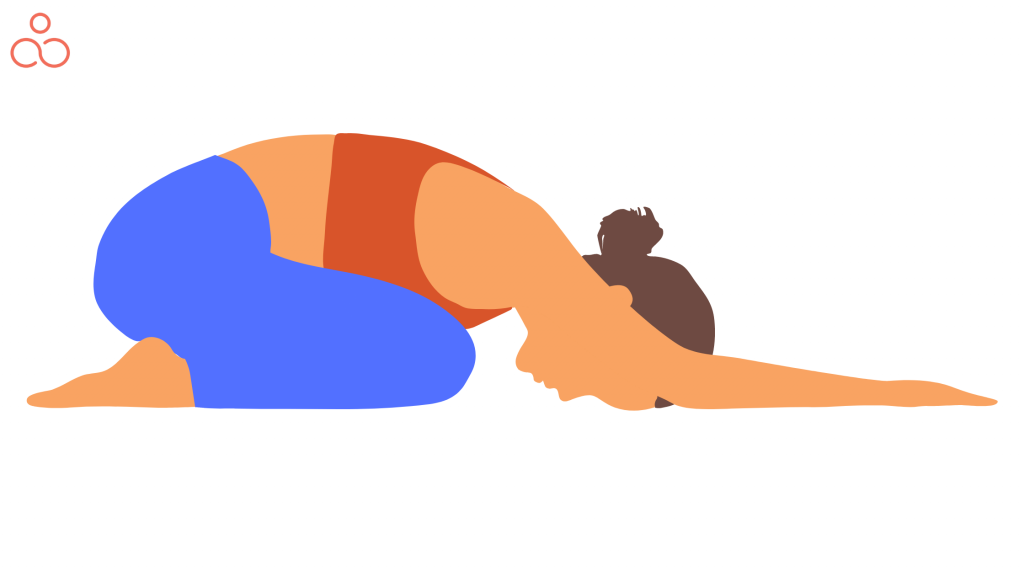
In Taoist and Chinese philosophy, the concepts of Yin and Yang describe how opposing forces interact and depend on one another in the natural world.
Yin describes slower, more passive qualities, whereas Yang represents faster, more dynamic qualities.
When the two forces of Yin and Yang are balanced, there will be health and well-being. This concept of balance is also found in the Yoga sutra 2.46, “sthira-sukham asanam“, which states that asana should be both stable and comfortable.
Within a Yoga practice, the terms “sthira” and “sukha” constitute Yang and Yin qualities. Sthira refers to stability and steadiness, while sukha refers to ease and comfort. To achieve a balance between Yin and Yang, sthira and sukha, practice a simple Yin-Yang Yoga sequence.
Yin-Yang Yoga: The Practice of Balancing the Body, Mind, and Spirit
Yin-Yang practice is very gentle and great for beginner Yoga students. It starts with active movement and transitions to slower movement.
According to Taoist philosophy, Yin and Yang arise from the “primordial source”, and they are used to describe characteristics found in nature. They are also relative terms. Something is only considered Yin in relation to something more Yang. For example, the moon is more Yin than the sun, which is more Yang.
These seemingly contrary forces interrelate with one another.
- Yin and Yang create, control, and transform into one another.
- Traditionally, Yin and Yang are described as the shady and sunny side of the mountain.
- They can be thought of as phases of a cyclical movement (dark and light, activity and rest) or varying states of matter (expansion and contraction or rising and descending).
- According to Taoist philosophy, everything has both Yin and Yang aspects.
- Within the Yin-Yang symbol, there is still a spark of Yang on the Yin side, and within the Yang side, there is still a hint of Yin.
Want to learn more about the science behind Yin Yoga? Read on for more information here.
Let’s boost up your practice with this Yin-Yang Balancing Yoga Sequence
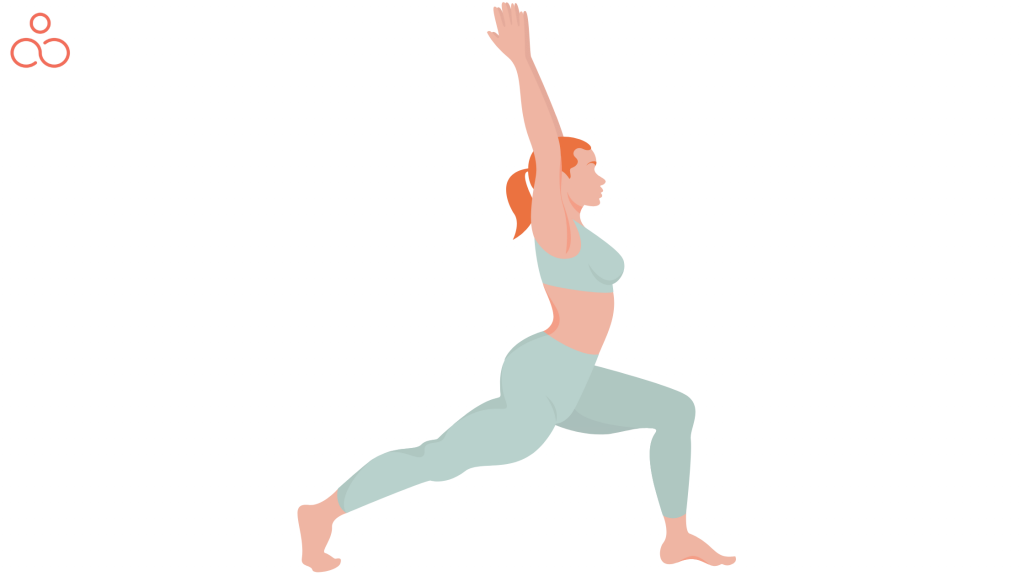
When you can’t decide between Yin and Yang, there’s a way to do both in a single practice. This sequence is excellent for those who want to flow gently without chaturanga or jumping back and forward and prefer a minimum downward dog.
Beginning with a few Yin positions, the practice focuses on the connective tissue while the body is still cool to prevent the muscles from absorbing all the stretch (generally a key thing to keep in mind with Yin). The Yang movements that follow complement the Yin sequence; they serve as counterposes, helping to increase blood flow, lymphatic drainage, and chi circulation throughout the body. The Yang poses are not so vigorous as to conflict with the Yin poses; instead, they build on the increased range of motion initiated by the Yin poses. This combination of Yin and Yang poses helps to create a balanced, flowing sequence that will leave you feeling relaxed, energized, and deeply connected to your body.
Yin-Yang Balancing Yoga Sequence
1. Breath
Begin by laying on your back with a bolster or blanket roll placed perpendicularly beneath the ribs. If necessary, use a block or folded blanket to support your head. Allow your body to relax into the support beneath it, and take a few moments to become aware of your breath. Inhale deeply, feeling your ribs and chest expand, and then exhale slowly, allowing your body to relax further into the support. Count to 5 on the inhale and five on the exhale. After 3-5 rounds, insert a slight pause at the top of the inhale. Repeat several rounds, allowing your breath to become deeper and more relaxed with each round.
2. Child’s Pose
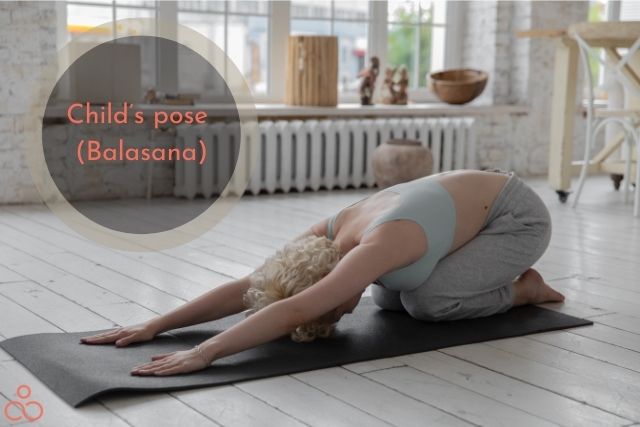
Sit comfortably in child pose, keeping the awareness towards your breath. Stretch your hands forward in front or place it on the side of your body with your palm facing up. Relax your shoulders and let your chest melt towards the ground. Stay in this posture for a few deep breaths or as long as you find it soothing and restorative.
3. Cat/Cow Pose
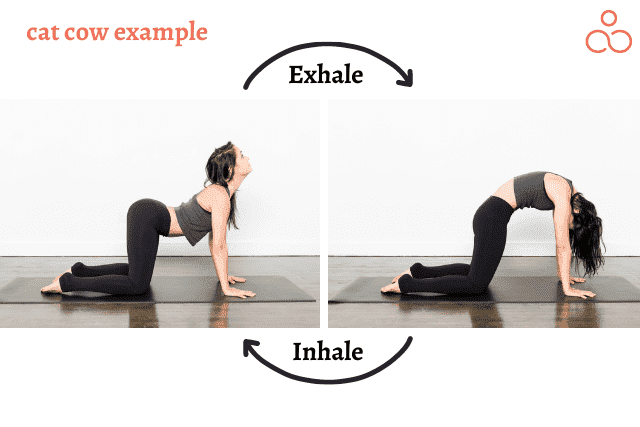
Move through 5-8 rounds of deep breathing, focusing on expanding the rib cage with each inhale and drawing the rib cage in with each exhale. After completing the rounds, add side-to-side movements to further bring awareness to the rib cage and deepen the breath.
4. Hands and Knees Balance Pose
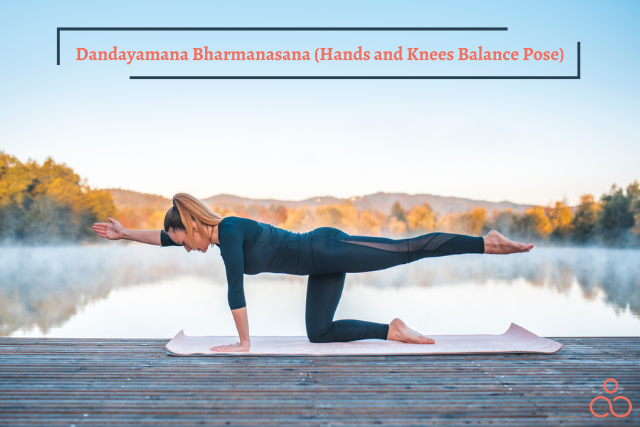
Stay in the table top pose with inhales, stretch your opposite leg and hands up (Right leg & left hand) with exhale bring your knees closer to the elbows, spinal movement same as cat pose. Repeat for 8-10 times on each side.
5. Downward Facing Dog Pose to Plank Flow Pose
Move between these two poses with the breath. Lead with the chest, and let your arms, shoulders, and core support you.
6. Locust Pose
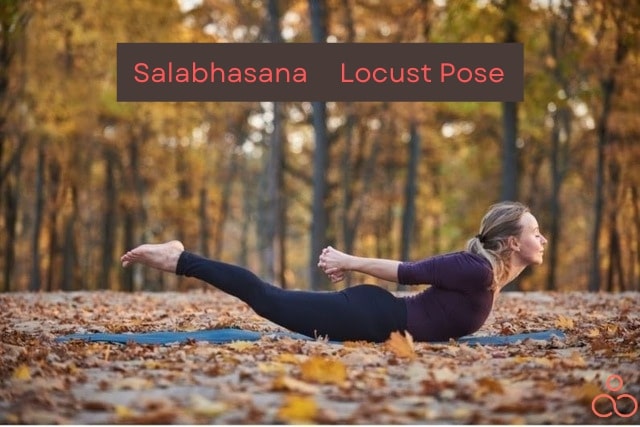
Hook your thumbs or interlace your fingers behind your back. Lengthen your arms while bringing your shoulder blades together. Lift your sternum and upper ribs away from the floor, creating a gentle arch in your upper back. Soften your body, take a few deep breaths, and then repeat the movement.
7. Bow Pose
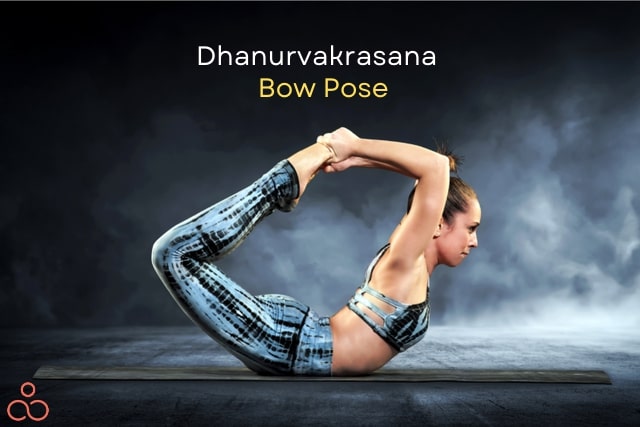
Lying down on the belly, bend your knees and grab your ankles. With Inhale, lift your upper body and knees up, maintain the posture for a few breaths, slowly release the posture as you exhale. Repeat for 2-3 times holding the pose for 3-5 breaths.
8. Lizard pose
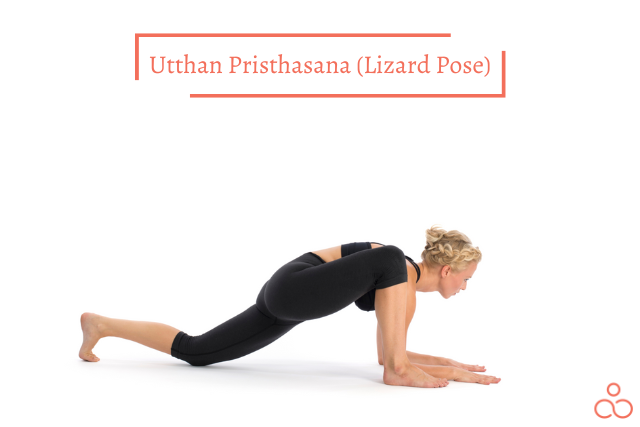
From the downward facing dog place your right leg on the outside of the right hand, drop your left knees on the mat and rest the forearms onto the mat. You can stay on your palms too, to keep it gentle. Experience the Yin portion of your practice. Find stillness for several deep breaths. Repeat on the other side.
9. Pigeon pose
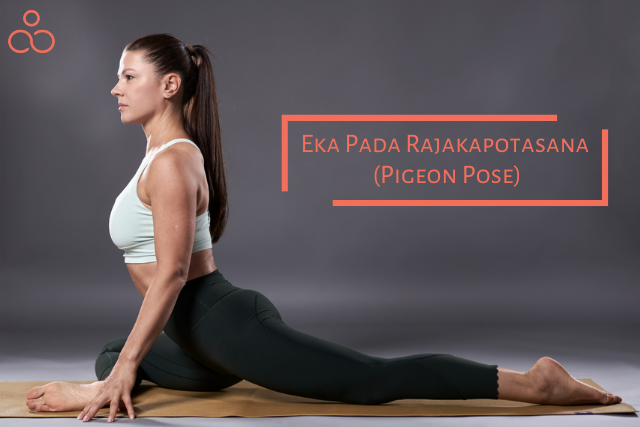
Enter into the pigeon pose, stretch your arms forward and rest your forehead on the mat. Stay in this pose for 8-10 breaths relaxing the entire body as you actively stretch your muscles around the hips. Feel the muscles getting stretched and the body getting relaxed at the same time. Repeat on the other side.
10. Supine Spinal twist Pose
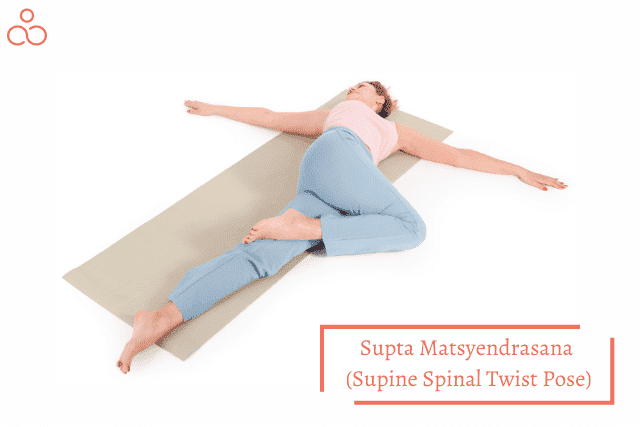
Lying down on the back Place your hands in-line with your shoulders. Bend your right knee, Place your left hand on top of the right knee and drop it to the left side of the body. Look towards the right shoulders. Stay in the posture for a few breaths and then repeat on the other side.
11. Shavasana
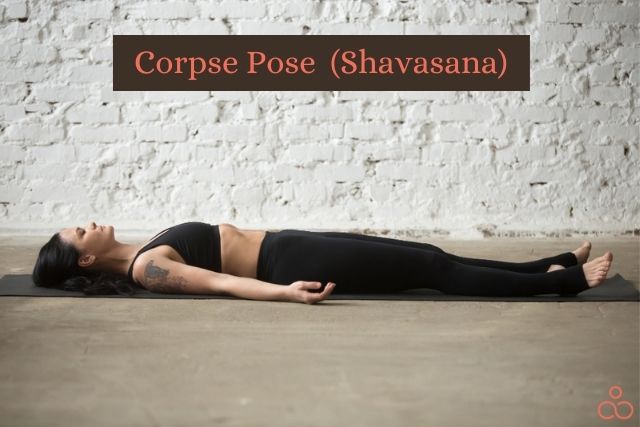
Place a folded blanket over your chest and allow your arms to lengthen along your sides. Imagine lines from your chest’s center to your thumb and index finger. Notice any sensation or warmth here. This is a great time to take a few minutes to practice guided meditation or simple relaxation.
To achieve a balanced Yoga practice, it is essential to include both Yin and Yang elements. You could incorporate one or two Yin or Restorative Yoga sessions into your weekly schedule or combine both Yin and Yang aspects in the same class. This will help you to achieve a more balanced practice.
What is the difference between Yin and Yang Yoga? With some of their significant health benefits!
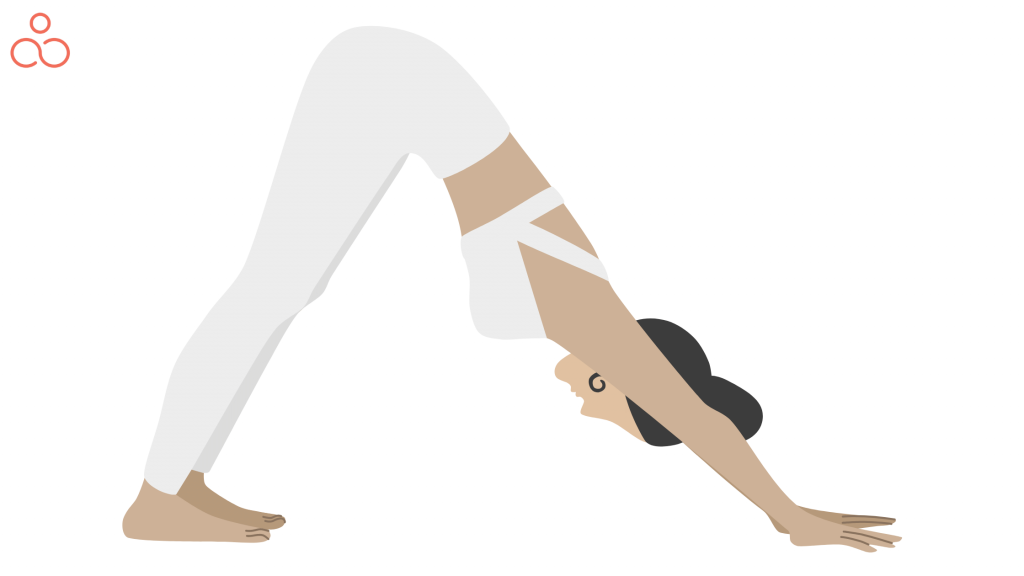
Yin Yoga and Yang Yoga are the two main polarities of Yoga practice. While they share common roots and principles, each style has its distinct characteristics that cater to different needs and preferences.
| Yin Yoga | Yang Yoga |
| The body’s relatively stiff connective tissues (tendons, ligaments, fascia) are considered ‘Yin’. | ‘Yang’ refers to the more flexible and mobile muscles and blood. |
| Stable, feminine, immobile, passive, cold, and downward moving | Changing, mobile, masculine, active, hot, and upward-moving |
| More passive asanas in Yoga | More active and dynamic asanas in Yoga |
| Increases flexibility & joint mobility, promotes relaxation, reduces stress and anxiety, enhances meditation practice | Builds strength & stamina, improves balance & posture, boosts energy levels & mood |
| Some examples of Yin Yoga poses include:Sukhasana (Easy Seated Pose)Bound Angle Pose (Butterfly)Child’s PoseFrog PoseGarland Pose (Yogi Squat)Happy Baby PoseSavasana (Corpse Pose) | Some examples of Yang Yoga poses include:Warrior 1Warrior 2Warrior 3Triangle PoseHalf Moon PoseReverse Half-Moon PoseChair Pose |
Benefits of practicing Yin Yang Yoga regularly
Yin Yoga
- Improves flexibility, joint mobility, and circulation by working intensely on connective tissues (tendons, ligaments, and releasing fascia in the joints).
- Brings balance to the body’s organs by stimulating the meridians (energy channels).
- Reduces stress and anxiety by switching on the parasympathetic nervous system.
- It leads nicely into the meditation portion of your practice.
- Calms and balances the body, mind, and spirit.
Yang Yoga
- Helps boost the body’s strength and tone.
- Improves blood circulation and flexibility.
- Increases endurance
- Calms the mind by encouraging us to move in sync with our breathing.
- Helps the body to release tension and blockages so that breath and prana may circulate.
What is a Yin Yang Yoga Class For Beginners: Easy Poses To Do!
To begin, find a quiet space where you can relax and focus on your practice. Begin by sitting cross-legged on your mat and breathing deeply to focus your thoughts and relax. From here, we will move into some gentle poses that will help to open up your body and release tension.
- Begin with the mountain pose – Stand tall with your feet hip-width apart and your arms relaxed at your sides. Inhale and lengthen your spine, reaching the crown of your head towards the sky. Exhale and release any tension in your body.
- Then, begin with the downward dog pose – Begin on your hands and knees, then lift your hips up and back, extending your arms and legs into an inverted V-shape. Hold for several breaths, then release.
- Finally, end with the child’s pose – Kneel on your mat and lower your hips back towards your heels, extending your arms out in front of you. Take a few deep breaths to release any tension in your body.
Don’t forget to listen to your body and take breaks whenever necessary. With practice, these easy poses will help to improve your flexibility, strength, and overall well-being.
Yin Yoga Class for Pregnant Students: What To Keep In Mind?
Both pregnant and hypermobile students can benefit from practicing Yin Yoga. The goal of a Yin Yoga practice for pregnant students is not to increase flexibility, but to promote good health. Pregnant Yoga students attending Yin Yoga class should avoid pushing themselves to achieve a greater range of motion (ROM) than they had before becoming pregnant. However, they can still gain mental, energetic, and physiological benefits from the practice. Many Yin Yoga instructors are also prenatal teachers who have experienced the many benefits of Yin Yoga during their pregnancies.
From a prenatal perspective, all of the concerns highlighted against Yin Yoga centered around pushing too far physically. To avoid this, the student should pay attention and accept the range of motion she had before as her current limit. This will ensure that she can still reap the benefits of a Yin Yoga practice without risking her health.
8 Common Myths and Misconceptions Of Yin and Yang Yoga
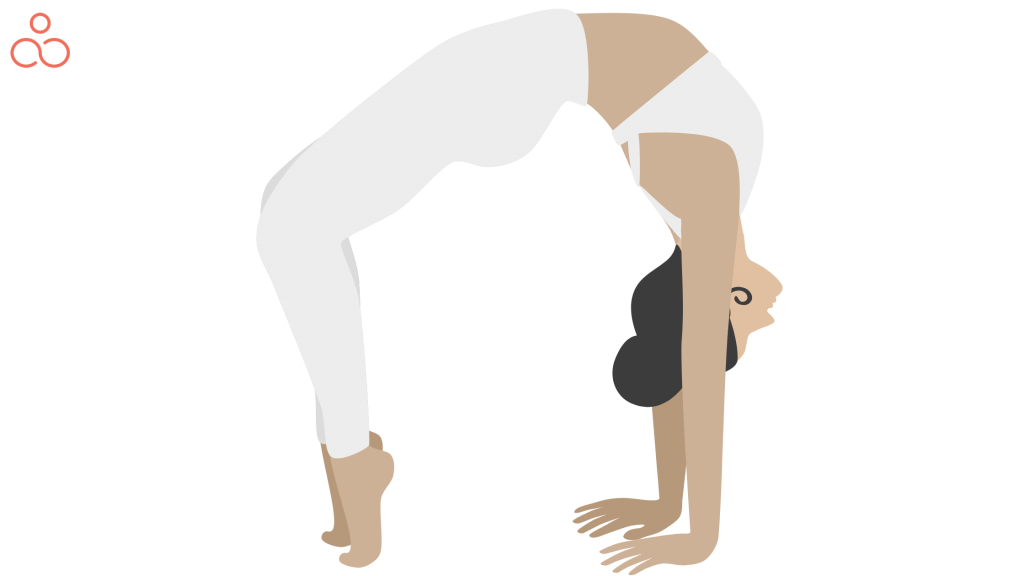
Yin and Yang is a concept that is commonly associated with ancient Chinese philosophy and medicine. It represents the idea of two opposing yet complementary energies that exist in the universe. In Yoga, the principles of Yin and Yang are often applied to the practice to help create balance and harmony within the body and mind.
However, numerous myths and misconceptions surrounding Yin Yang Yoga have led to confusion regarding its nature and aspects. Some of the common ones are –
1. Yin and Yang Are Religious Symbols
A common misconception is that Yin and Yang are religious symbols. This likely stems from a combination of their strong personal superstitious religious beliefs. When they see something from another culture with a meaning that is unclear to them, they assume it has a religious significance because that’s a fundamental part of their own worldview. In reality, Yin and Yang refer to the idea that there are opposites for everything, and the interaction of these opposites brings about movement, energy, and life.
2. Yin and Yang Have Moral Significance
Yin and Yang is not a system of morality or ethics. It is simply a way of understanding the world and the energies that exist within it. While some people may apply moral or ethical principles to the concept of Yin and Yang, it is not inherent in the philosophy or practice.
3. Yin and Yang Are In Conflict
Yin and Yang are not opposing forces. Instead, they are complementary energies that work together to create balance and harmony within the body and mind. Yin Yang Yoga involves practicing postures and movements that help to balance the Yin and Yang energies within the body.
4. Yin and Yang Are Absolute Values
Yin and Yang are not absolute values or categories. Instead, they are relative terms that describe the qualities and energies of different things. In Yin Yang Yoga, we seek to balance the Yin and Yang energies within ourselves rather than trying to achieve a specific or absolute state.
5. Yin Yang Yoga is only for advanced yogis
Yin Yang Yoga can be practiced by yogis of all levels, from beginners to advanced. It is a gentle and accessible form of Yoga that can be adapted to suit a range of abilities and physical limitations.
6. Yin Yang Yoga is too slow and boring
While Yin Yang Yoga may be slower-paced than some other forms of Yoga, it is not inherently boring or unengaging. Instead, it allows practitioners to cultivate a deeper awareness of their bodies and minds and to connect more fully with the present moment.
7. Yin Yang Yoga is only for flexibility
While Yin Yang Yoga can help to improve flexibility, it is not limited to this benefit alone. It can also help to improve overall strength, balance, and circulation, as well as promote relaxation and stress reduction.
Important Tips
- Balance both energies: Ensure your practice incorporates both Yin and Yang elements to create a harmonious flow of energy.
- Mindful transitions: Smoothly transition between Yin and Yang poses, being aware of your breath as you move.
- Warm up properly: Start with gentle stretches and dynamic movements to prepare the body for deeper Yin poses.
- Hold poses longer: In Yin Yoga, hold passive poses for longer periods (3-5 minutes) to target deep connective tissues and improve flexibility.
- Listen to your body: Pay close attention to your body’s signals, modifying or easing out of poses when necessary to avoid injury.
- Keep a steady breath: Maintain a calm, rhythmic breath throughout the practice to enhance relaxation and concentration.
- Utilize props: Use blocks, straps, bolsters, or blankets to support your body in challenging Yin poses for added comfort and stability.
- Focus on relaxation: Allow muscles to relax during Yin poses for deeper engagement of the connective tissues.
- End with Savasana: Complete your practice with a 5-10 minute Savasana (Corpse Pose) for deep relaxation and integration of the session’s benefits.
- Practice consistently: Regularly engage in Yin & Yang Yoga practice for optimal physical, mental, and emotional well-being.
Frequently Asked Questions
What should I wear to a Yin Yang Yoga class?
When you practice yoga, it’s important to wear clothing that is comfortable and allows for flexibility. Avoid clothes that are overly tight or restrictive and any jewelry or accessories that may interfere with your practice.
What is Yin and Yang Yoga?
Yin & Yang Yoga is a style of Yoga that blends the principles of Yin and Yang in a more equal and balanced way. It involves holding postures for longer periods to promote relaxation and deeper tissue release, as well as more dynamic movements to build strength and stamina.
Is Yin Yang Yoga suitable for beginners?
Yes, Yin Yang Yoga is suitable for beginners as well as experienced practitioners. It offers a gentle and accessible practice that can be modified to suit your individual needs and abilities.
Should I use props while practicing Yin-Yang Yoga?
Yes, props can be helpful during Yin-Yang Yoga practice to allow for a deeper stretch and greater stability in poses. Sun salutations and standing poses can be done without props, but seated and reclining poses may benefit from the use of bolsters, blankets, or blocks. It’s essential to listen to your body and use props as needed to ensure a safe and comfortable practice.
Conclusion
So, was it a good adventure? Do you now understand what are Yin and Yang Yoga? Hope this article was enlightening!
Practicing Yin Yang Yoga could be the perfect combination when time is tight. In a perfect world, we can dedicate as much time to Yoga as we need. We occasionally have to seize the golden opportunity for our practice while we can due to work and family obligations. Take advantage of that time by practicing a balanced form of Yin Yang Yoga that combines Yoga’s more energetic and relaxing aspects. Look for Yin-Yang Yoga classes at your local Yoga centers or online if you want to learn from a qualified teacher and connect to a supportive community.

